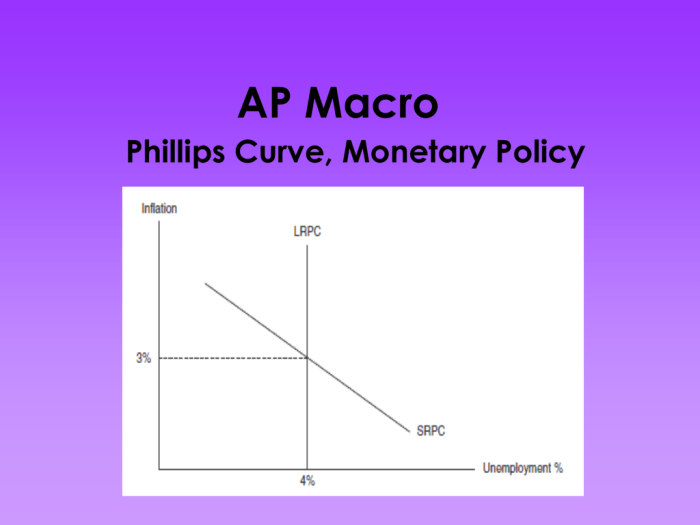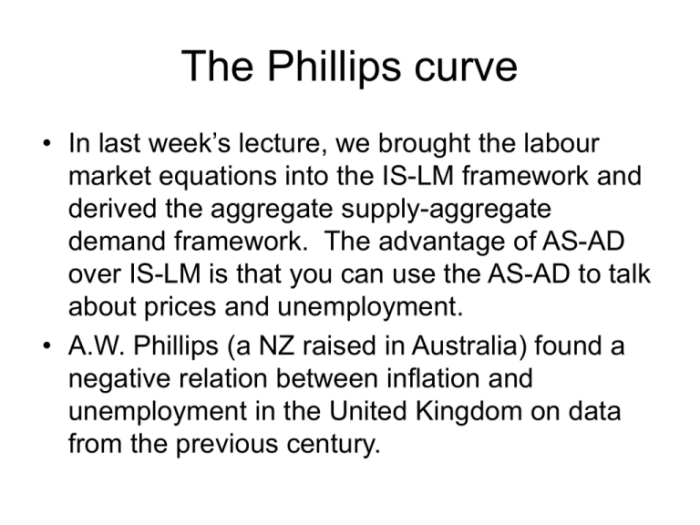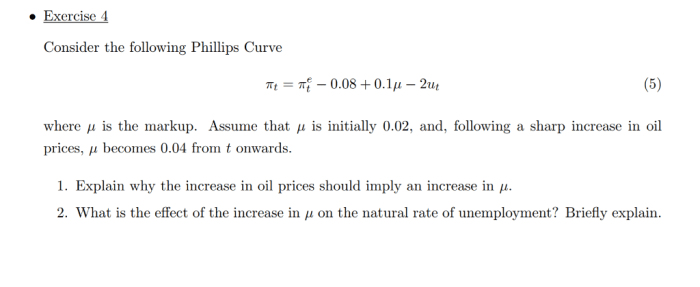ap macro topic 5.2 the phillips curve delves into the intricate relationship between inflation and unemployment, providing a framework for comprehending the economic dynamics that shape these two crucial variables.
The Phillips Curve, a cornerstone of macroeconomic theory, has served as a guide for policymakers and economists alike, offering insights into the trade-offs inherent in managing inflation and unemployment.
The Phillips Curve: Definition and History: Ap Macro Topic 5.2 The Phillips Curve

The Phillips Curve is an economic model that illustrates the inverse relationship between inflation and unemployment. Developed by A.W. Phillips in 1958, it suggests that when inflation is high, unemployment tends to be low, and vice versa. This relationship is often explained by the idea that when businesses compete for a limited pool of workers, they are willing to pay higher wages, which leads to increased inflation.
The Phillips Curve has been influential in shaping economic policy, as it provides policymakers with a tool to balance the goals of low unemployment and low inflation. However, it has also faced criticism and limitations, which will be discussed later.
Factors Affecting the Phillips Curve
The Phillips Curve is not a static relationship, and it can be influenced by various factors. These include:
- Technological advancements: Automation and technological progress can reduce the demand for labor, leading to higher unemployment and lower inflation.
- Globalization: The movement of jobs to countries with lower labor costs can have a similar effect.
- Changes in labor market institutions: Minimum wage laws and unionization can increase the cost of labor, potentially leading to higher inflation.
Criticisms and Limitations of the Phillips Curve, Ap macro topic 5.2 the phillips curve
While the Phillips Curve has been useful in understanding the relationship between inflation and unemployment, it has also faced criticism:
- Short-run vs. long-run trade-offs: The Phillips Curve only holds true in the short run. In the long run, there is no permanent trade-off between inflation and unemployment.
- Structural changes in the economy: The Phillips Curve may not accurately predict the relationship between inflation and unemployment during periods of significant structural changes, such as the transition to a service-based economy.
Policy Implications of the Phillips Curve
The Phillips Curve has implications for economic policy. Central banks and governments can use it to:
- Set monetary and fiscal policy: By manipulating interest rates and government spending, policymakers can influence inflation and unemployment.
- Make trade-offs: Policymakers can use the Phillips Curve to balance the goals of low inflation and low unemployment, choosing a point on the curve that they believe is optimal.
User Queries
What is the Phillips Curve?
The Phillips Curve is a graphical representation of the inverse relationship between inflation and unemployment.
What factors can shift the Phillips Curve?
Factors such as technological advancements, globalization, and changes in labor market institutions can shift the Phillips Curve.
What are the limitations of the Phillips Curve?
The Phillips Curve may not always hold true in practice, and it does not account for long-run trade-offs or structural changes in the economy.

